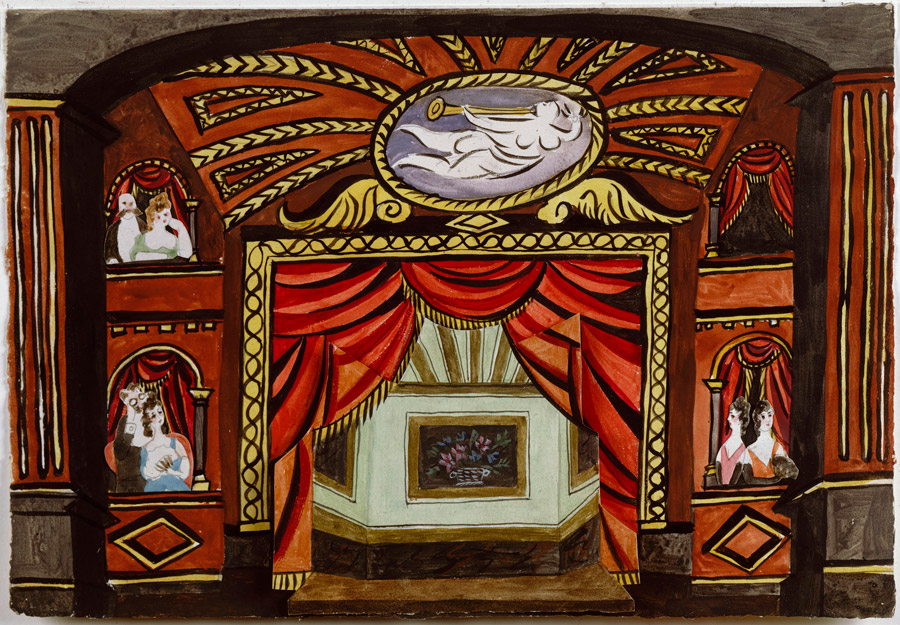Douglas Cooper Recollects Diaghilev’s Cuadro Flamenco, staged in 1921.
The fourth production in which Picasso designed sets for Diaghilev was entirely different from the three previous ballets. Diaghilev, Stravinsky, and Boris Kochno arrived in Seville for Holy Week in search of a gypsy cuadro flamenco, and spent several days in bars and cabarets watching dancers and listening to musicians. Diaghilev found a young dancer called Pepita, whom he recognized right away as the beautiful young woman he had spotted riding around the city in a carriage. He hired her simply for her beauty, and gave her the stage name Maria Dalbaicin. After having trouble finding a troupe of flamenco artists, Diaghilev, with the help of Pepita and a few friends, chose them separately and sent them to his ballet company in Monte Carlo to prepare their song and dance numbers and rehearse before the summer season opened in Paris and London.
After Stravinsky attended several flamenco shows in Seville, he found that the traditional music was perfect, and refused to rearrange it. At the same time, Diaghilev realized that he would never succeed in staging a ballet with his recently-hired troupe. Spanish gypsy dancers follow their instincts, are not used to learning a part, do not have a sense of orchestral music, and never dance the same steps twice. The only solution was to offer a traditional flamenco show, with Andalusian songs and dances, accompanied only by two guitars, and to enhance the performance by commissioning special sets and costumes from a Spanish artist.
[…] Diaghilev remembered the sets that had been rejected for Pulcinella, which Picasso had designed the year before. He also knew that associating Picasso with his Cuadro flamenco would add interest and prestige to the show, and that the available sets were appropriate for the genre. It turned out to be a great success.
Picasso told me he didn’t remember anything about the costumes and their colors. According to the existing photographs, they followed traditional models, with long shawls for the women, livened up by Picasso with bold ornamentation and undoubtedly with bright colors as well. Boris Kochno claimed to have seen Picasso’s sketches for the costumes at the time, but they seem to have disappeared since.[1] Cyril Beaumont reports that “the men wore simple clothes—the classic white shirt, vest, and black pants, tight at the hips and ankles; the women had light-colored dresses. One of the dancers wore a white dress trimmed with big ruffles and ending in a long train.”
The show was a novelty, making quite a splash and delighting audiences in Paris and London. But not actually being a ballet, it could not be performed anywhere else; since the artists could not be employed in any other way, Cuadro flamenco disappeared from Diaghilev’s repertoire at the end of the season.
[…] Cuadro flamenco was to remain an interlude in Picasso’s output, with no pictorial continuity. However, there is one personal memento that can be associated with this season of Diaghilev’s Ballets Russes: a portrait by Picasso of Boris Kochno, with whom he had developed a warm friendship. […]
From Picasso et le Théâtre, Douglas Cooper, Éditions du Cercle d’Art, 1967, pp. 48-51.
[1] Picasso’s sketches for the costume designs were left in his studio and continue to be held by his heirs.





 Summary
Summary